Optimizing a small website with a small budget or on no budget can be tricky. But that’s no excuse for brushing off SEO completely.
Organic search is a great source of high-quality traffic that keeps your lead and sales pipelines from drying up. Traffic means customers and revenue, as long as you can convert and close them.
No site is too small to compete in a niche, even if it currently drives zero traffic.
Optimizing your small website begins with on-page and mobile factors.
On-Page & Mobile Factors to Optimize
On-page optimization is critical for a site of any size, but it’s especially important for smaller websites.
You’ll need to optimize your site structure, links, keywords, meta tags, meta descriptions, canonical tags, URLs, and content. You also need to optimize for mobile and usability.
Focus on the following areas to drive more traffic and attract customers.
Make Your URLs User-Friendly
Most CMS platforms allow you to change and edit URLs.
For instance, in WordPress, you simply insert your post’s title into the Title section, and it automatically turns it into a readable URL like this:

To optimize the URL, you can also change the slug in the Yoast SEO plugin:
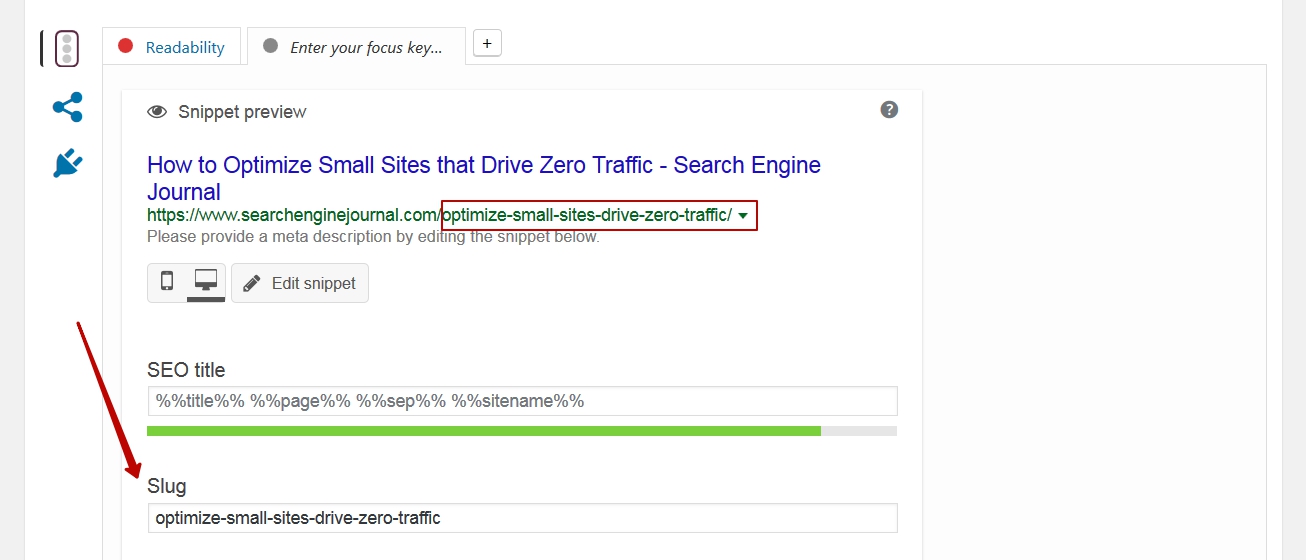
Users should be able to understand a page’s contents simply from reading the URL.
For more tips, check out 15 SEO Best Practices for Structuring URLs on Moz.
Include Target Keywords in Your Titles
This may seem fairly simple. But including a keyword or multiple keywords into a page’s headline can actually be pretty complex.
- Identify the best keyword to place into the title. You can’t just launch Google’s Keyword Planner, pull a spreadsheet with keywords, sift out keywords that align with your goals, and move on to content creation. You also have to dig deeper into user intent. Today, keywords on their own don’t matter much; a user’s intent when they type in certain queries matters much more.
- Brainstorm a catchy title. Your job is to strike the right balance between a headline that looks and feels natural and one that features your targeted keyword. This isn’t as easy as it may seem.
If your headline is boring, nobody will click on and read your content. So get creative when crafting your headlines.
Use Visual Content
Visual content is absolutely vital. Images, videos, infographics, presentations, screenshots, GIFs, and memes make your content more appealing (and easier to consume), and help keep your visitors engaged.
Content that doesn’t feature any imagery is pretty useless. Most people won’t read large blocks of text; users will simply click away.
Check out this SlideShare to learn more about why visual content is paramount to your success.
Use Heading Tags
Heading tags (H1-H6) help users and search engines understand what your post is about.
Use one H1 tag per page. This is the title that will typically appear in search results.
As for H2-H6 (subheading) tags, they won’t help you rank any better, but they will help users consume your content.
Keep your subheadings informative and descriptive. Users scan, rather than thoroughly read most of the content on the web. Ensure consumers can grasp your content’s meaning by simply skimming subheads.
Typically, you’ll only need to use H2 and H3 tags. Follow nesting rules for these.
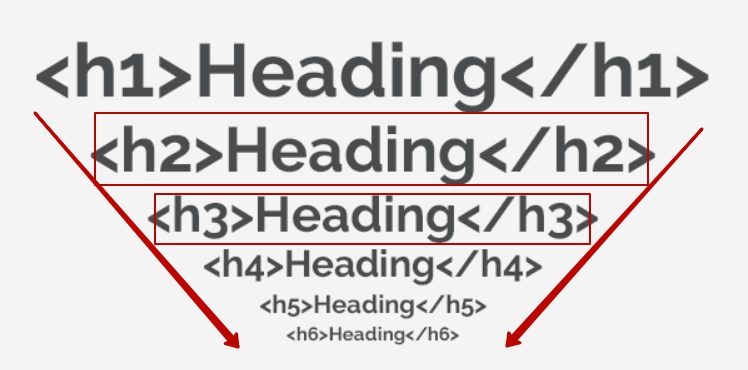
Place a Targeted Keyword in the First Paragraph
Though this tactic is considered outdated by some SEO pros, I still recommend including your main keyword(s) in the first paragraph, or even the first sentence.
The first paragraph is what users see immediately when they access a page. Aside from the headline, keywords placed in the first paragraph will help them figure out the meaning of the ensuing pages and influence their decision to keep reading.
Link to Related Pages and Content
Your website navigation is important for SEO because:
- Good website navigation helps keep visitors on your website longer, improves your engagement metrics, and signals to Google that your site is of high value.
- Links signal importance and relevance. Linking from your top-performing pages to less successful pages can help increase their value (and rankings).
- Website navigation helps search engines efficiently crawl and understand your site. To optimize small sites, link pages with the big picture of your site’s structure in mind.
Website navigation is also great from a user experience standpoint because it makes it easy for people to find exactly what they’re looking for. Always try to use your links to move users toward your ultimate goal: a conversion or purchase.
Optimize Image Alt Text
You should optimize alt text to help Google index and rank your images properly – especially if you’re using original visual content.
Google will index your images regardless (unless you tell them not to). But if you want to rank well in Google Images for certain queries, your images must be optimized. Google’s image analysis capabilities aren’t perfect – even if they’re getting better all the time.
Make sure all your images have alt text and check to see that at least one image per page features your targeted keyword. Here’s where you can add alt text in WordPress:
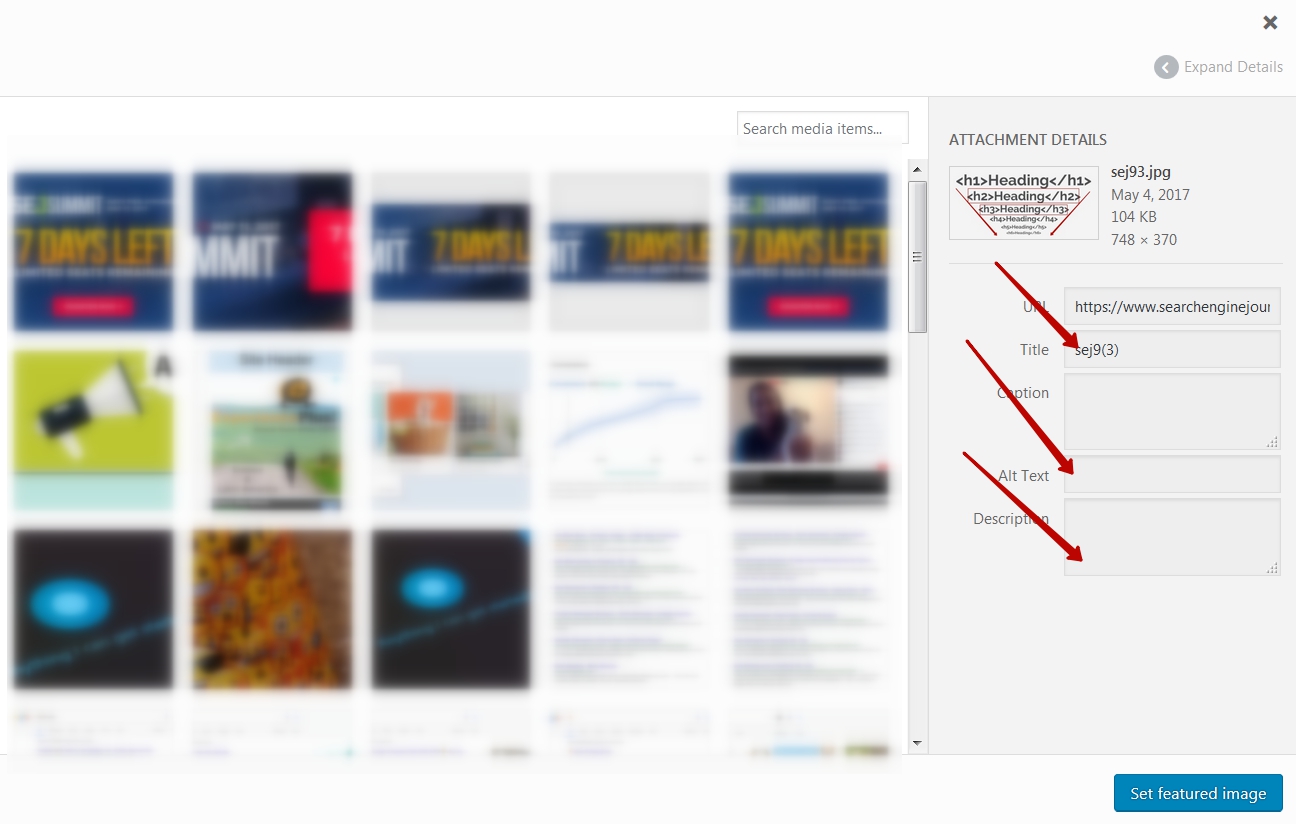
A title and a description are optional, but I recommend filling them out as well.
Add User-friendly Social Sharing Buttons
While social links are mostly useless from an SEO perspective, social media can help more people discover your content. Make it easy for people to share your great stuff.
“Scrollable” social sharing buttons are the most effective as they allow users to share content while reading, like this:
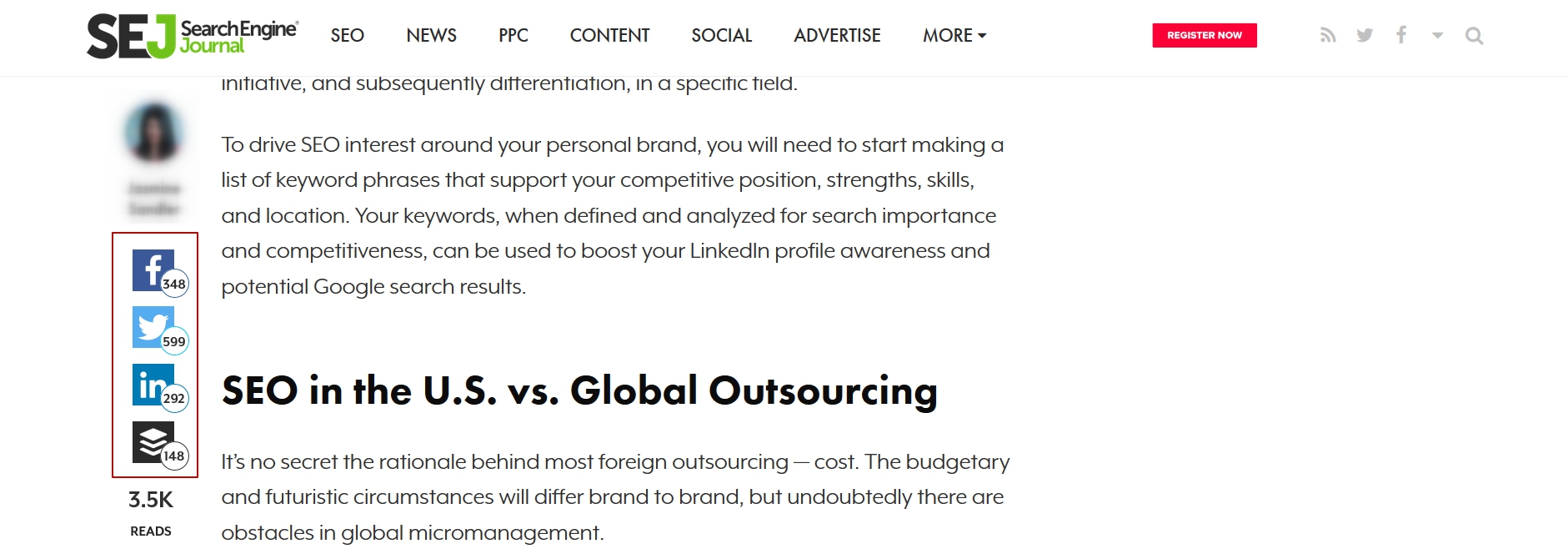
Consider placing social buttons at the top and/or bottom of an article.
Check out this short guide to learn how to install social buttons on WordPress.
Write 800+ Word Posts
Short content does work, but for certain queries Google may view longer posts as more valuable, credible, and trustworthy. Longer content also can attract more high-quality backlinks.
So what’s the ideal post length?
I recommend writing articles that are between 800 and 2,500 words. The longer the better, but don’t forget that the amount of words doesn’t matter as much as the value.
Optimize for Better Site Speed
Page speed has been an important ranking factor since 2010. Today, a page’s load time has a huge influence on a website’s mobile ranking as well thanks to the introduction of AMP and the mobile-first index.
Page speed is important because users won’t wait for slow sites to load. Slow load time equals bad usability and leads to poor engagement. It’s hard to rank well if your PageSpeed Insights test returns something like this:
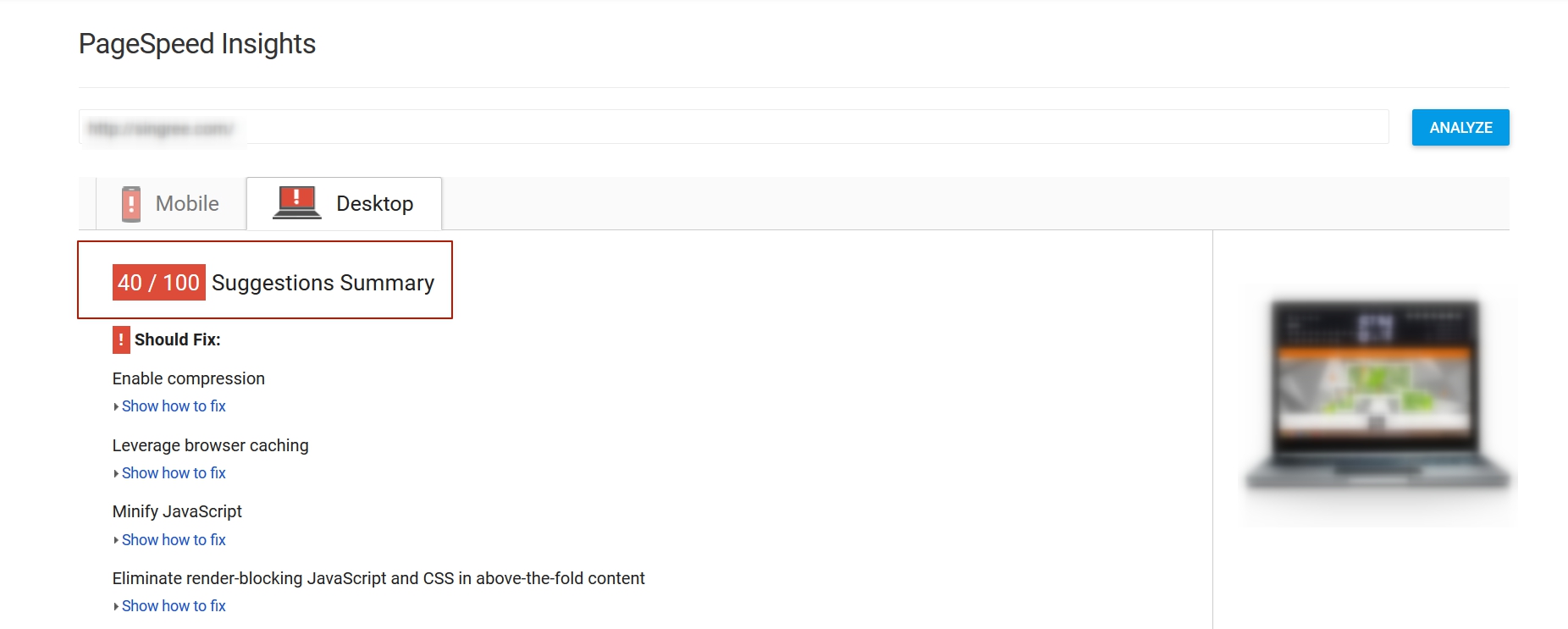
Your site should score at least 70-80 points for desktop and mobile in PageSpeed Insights.
This tool provides lots of useful information and guidelines on how to improve your site’s load time. A proficient developer can help fix these issues for you.
Check if a Page Is Mobile-friendly and Responsive
A responsive, mobile-friendly site is a must-have for SEO success in 2017:
- Websites that are mobile optimized will likely out rank you in mobile search results.
- 71 percent of total digital minutes in 2017 in the U.S. are spent on mobile devices.
- The average American spends 87 hours per month browsing on their smartphones.
Conversion rates for smartphones and tablets are lower compared to desktops, but people use mobile devices more than PCs to search and research. Basically, mobile devices act as an entry point to your website’s conversion funnel, so make sure that users want to return to your site to convert on their PCs.
Google’s Mobile-Friendly Test allows you to see the big picture to identify potential issues that need to be addressed.
Don’t underestimate the importance of mobile.
Conclusion
Getting on-page and mobile optimization right is crucial for getting high positions in the SERPs. Make sure your site is optimized for search engines, but also user friendly. Optimizing with your users in mind will help ensure you attract traffic and better organic search rankings.
Image Credits
Screenshots by Sergey Grybniak. Taken May 2017.




